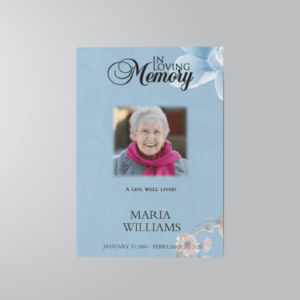Spanish Obituaries: Honoring Loved Ones in a Rich Cultural Tradition
In times of loss, creating an obituary pamphlets that reflects the life and legacy of a loved one is a meaningful way to honor their memory. For Spanish-speaking communities, this tradition holds particular importance, often blending reverence for the deceased with cultural customs and linguistic nuances. Here we explore the significance of Spanish obituaries, how they differ from English obituaries, and provide tips for creating a heartfelt and culturally respectful tribute.
The Significance of Spanish Obituaries
In Spanish-speaking cultures, obituaries serve as more than just a formal announcement of a death. They are a deeply ingrained tradition that allows family and friends to celebrate the life of the deceased, express condolences, and provide details about funeral arrangements. Spanish obituaries often include not only factual information such as the name, age, and date of death of the deceased but also personal anecdotes, religious sentiments, and messages of remembrance.
Differences Between Spanish and English Obituaries
One key difference between Spanish and English obituaries is the use of language. While English obituaries tend to be more straightforward and factual, Spanish obituaries often use more emotive and poetic language. This reflects the cultural value placed on expressing emotions and honoring the deceased in a heartfelt manner.
Another difference is the format. Spanish obituaries may include sections such as “Agradecimiento” (Acknowledgments), where the family expresses gratitude to those who have offered condolences and support. Additionally, Spanish obituaries may include religious references or verses, reflecting the strong influence of Catholicism in many Spanish-speaking cultures.
Tips for Writing a Spanish Obituary
Start with a Personal Tribute: Begin the obituary with a heartfelt tribute to the deceased, highlighting their personality, achievements, and impact on others.
Include Key Biographical Information: Provide essential details such as the full name of the deceased, age, date of birth, and date of death.
Share Family Information: Mention surviving family members, including spouse, children, parents, and siblings.
Include Funeral Details: Provide information about the funeral or memorial service, including date, time, and location.
Express Gratitude: Include a section to thank those who have offered condolences and support during this difficult time.
End with a Thoughtful Closing: Conclude the obituary with a meaningful quote, verse, or reflection that captures the essence of the deceased.























































